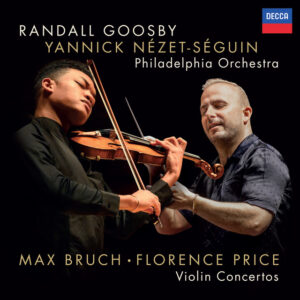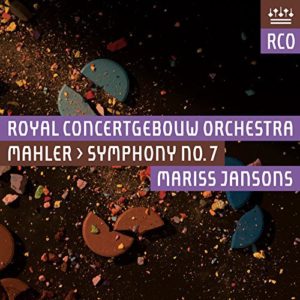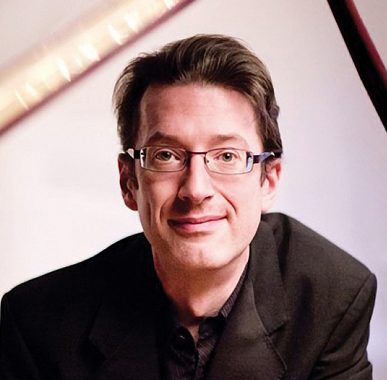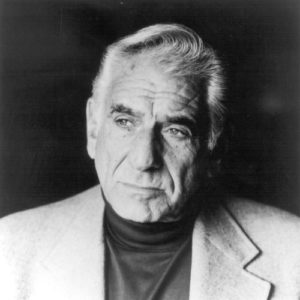GRAMOPHONE Review: Bruch Violin Concerto No 1, Price Violin Concertos 1 & 2 – Randall Goosby, Philadelphia Orchestra/Nézet-Séguin
 You can absolutely hear why Randall Goosby has been turning heads with his open-hearted and generous ‘school of Perlman’ delivery. There’s an honesty – and modesty – about his playing that stands him apart. It’s so refreshing to note an absence of excess in either sound or feeling. This playing isn’t dressed to impress but to express.
You can absolutely hear why Randall Goosby has been turning heads with his open-hearted and generous ‘school of Perlman’ delivery. There’s an honesty – and modesty – about his playing that stands him apart. It’s so refreshing to note an absence of excess in either sound or feeling. This playing isn’t dressed to impress but to express.
The European influence and amplitude of the ever-popular Bruch concerto is our way here to the world of Florence Price and in these live recordings from Philadelphia Goosby has another of her champions – Yannick Nézet-Séguin – acting like a second skin in their shared enthusiasm. But nothing is over-gilded in the Bruch: sound and feeling are one and there is no grandstanding or, one might say, over-projection of the emotion for its own sake. Then again one never doubts Goosby’s passion for this music or his in-the-moment response to it, and when finally in the opening paragraph of the first movement the soloist excites the orchestra to its first big tutti the fire of the Philadelphia strings is something else.
Before the Price concertos (a decade apart in composition) comes Adoration – a popular Goosby encore but here amplified in a lush arrangement for string orchestra and solo violin by Jim Gray. The melody is just plain gorgeous, intensely personal and ‘spiritual’ in every sense. Goosby’s identification with it runs deep.
Price’s First Violin Concerto may from time to time reference European models lurking in its shadows (there’s more than a hint of the Tchaikovsky in the first movement coda – indeed it’s almost an homage) but Price is very much her own woman and nothing about her feels second-hand. Her ability to ‘spin’ ideas as a seasoned extemporiser or jazzer is a distinctive characteristic of this big and occasionally, one might argue, somewhat rambling piece. But against that one must weigh the distinctive colour and cast of her folk-inflected melodies and the highly personal way in which she journeys with them. Goosby’s identification with the music is so strong that every departure feels like it could be of his own making.
Price’s trademark solo trumpet – a plangent, evocative, voice – leads off the ‘spiritual’ reverie of the slow movement and it is a measure of her individuality in my brief acquaintance with her music that I would be able to identify her from the first measures alone.
Concerto No 2 is a more exotic specimen, flecks of celeste immediately lending it a hothouse feel. But the compression and concision of it (fifteen minutes in a single span of music) and again its improvisational manner makes for something you might describe as ‘stream of consciousness’ with Goosby seizing upon phrases so ravishing that you wonder where they’ve been all our lives.
You May Also Like

GRAMOPHONE Review: Mahler Symphony No. 7 – Royal Concertgebouw Orchestra/Mariss Jansons
01/04/2018
A Conversation With LLYR WILLIAMS
02/09/2010

